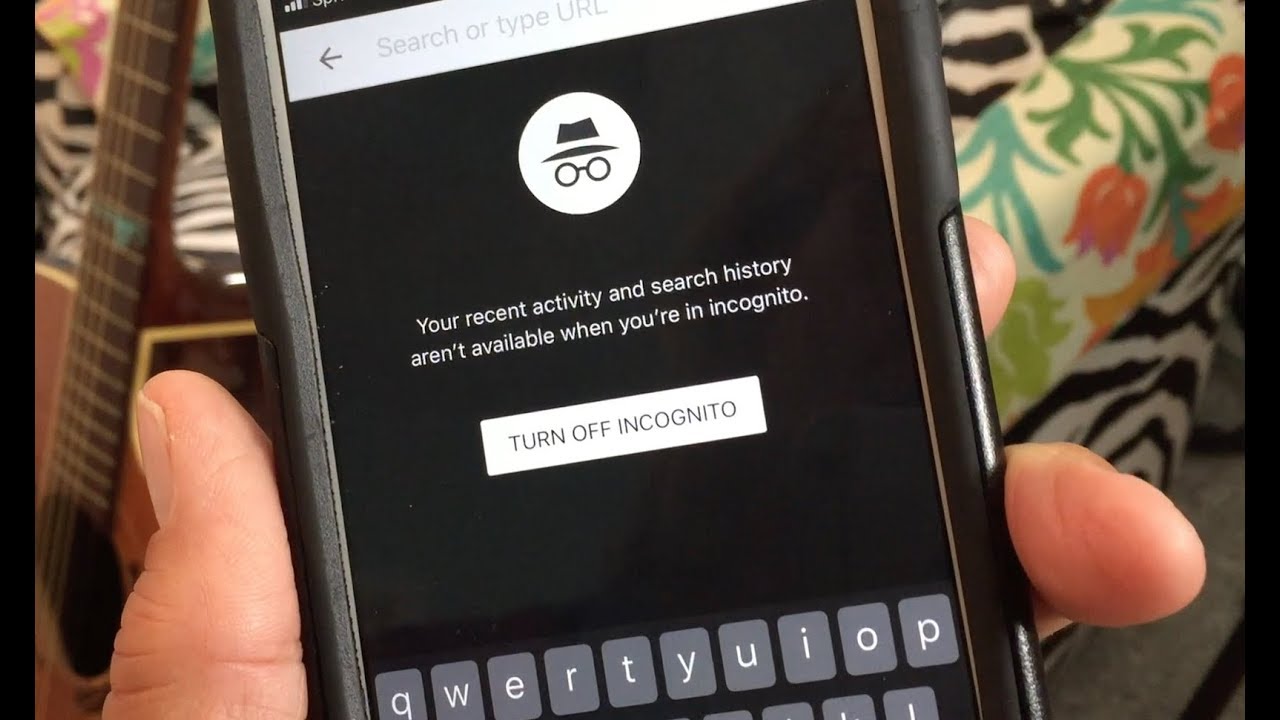Introduction
Have you ever experienced the frustration of Safari unexpectedly reopening old tabs? It can be quite perplexing to find yourself face-to-face with previously closed tabs, especially when you're eager to explore new web content. This common issue can disrupt your browsing experience and leave you scratching your head in search of a solution.
The persistent reappearance of old tabs in Safari may stem from various factors, such as retained browsing history, enabled iCloud syncing, or even outdated software. Fortunately, there are several troubleshooting methods that can help resolve this perplexing predicament and restore your browsing sessions to their intended state.
In the following sections, we'll delve into the intricacies of Safari's behavior and explore effective strategies to address the persistent reappearance of old tabs. From clearing browsing history and disabling iCloud syncing to ensuring that your Safari browser is up to date, we'll uncover the steps to regain control over your browsing experience. Let's embark on this journey to unravel the mystery behind Safari's penchant for reopening old tabs and reclaim the seamless browsing experience you deserve.
Clearing Safari History and Website Data
Clearing Safari's history and website data is a fundamental step in troubleshooting the issue of old tabs persistently reopening in the browser. This process involves removing stored data related to your browsing activities, including visited websites, cookies, and cached files. By doing so, you can effectively eliminate potential triggers that prompt Safari to resurrect old tabs, thereby fostering a cleaner and more predictable browsing environment.
To initiate the clearing process, launch Safari on your Mac and navigate to the "History" menu located in the top menu bar. From the dropdown menu, select "Clear History" to access the history clearing options. Here, you can specify the time range for which you wish to clear the browsing history. Opting for "all history" ensures a comprehensive removal of all browsing data, leaving no room for old tabs to resurface unexpectedly.
In addition to clearing browsing history, it's essential to address website data, which encompasses stored information from specific websites, including cookies, cached files, and preferences. To accomplish this, navigate to the "Safari" menu in the top menu bar and select "Preferences." Within the Preferences window, click on the "Privacy" tab to reveal the "Manage Website Data" button. By clicking on this button, you can review and remove website data associated with individual sites, further mitigating the likelihood of old tabs reappearing.
By systematically clearing Safari's history and website data, you effectively reset the browser's memory of past browsing sessions, creating a clean slate for your future web explorations. This proactive approach not only addresses the immediate concern of old tabs resurfacing but also contributes to enhancing your browsing privacy and security by minimizing the accumulation of potentially sensitive data.
In essence, clearing Safari's history and website data serves as a foundational strategy in troubleshooting the perplexing issue of old tabs persistently reopening. By embracing this proactive measure, you can take control of your browsing environment and pave the way for a seamless and predictable web surfing experience.
Disabling iCloud Tabs
Disabling iCloud Tabs can serve as a pivotal step in addressing the persistent reappearance of old tabs in Safari. iCloud Tabs, a feature designed to facilitate seamless browsing continuity across Apple devices, may inadvertently contribute to the unexpected revival of previously closed tabs. By disabling this feature, you can exert greater control over your browsing sessions and mitigate the likelihood of old tabs resurfacing.
To disable iCloud Tabs in Safari, begin by accessing the Safari menu on your Mac and selecting "Preferences." Within the Preferences window, navigate to the "General" tab, where you will find the option to disable iCloud Tabs. Unchecking the "Safari" checkbox under the iCloud section effectively disables the synchronization of tabs across your Apple devices, thereby interrupting the potential propagation of old tabs to your Safari browser.
By disabling iCloud Tabs, you effectively sever the link that enables the synchronization of browsing sessions across your Apple ecosystem. This deliberate disconnection serves to insulate your Safari browser from the influence of past browsing activities on other devices, thereby reducing the likelihood of old tabs resurfacing unexpectedly.
Furthermore, by taking control of iCloud Tabs and disabling their synchronization, you assert autonomy over your browsing experience, fostering a sense of predictability and coherence in your web explorations. This proactive measure not only addresses the immediate concern of old tabs persistently reopening but also empowers you to curate your browsing environment according to your preferences and priorities.
In essence, disabling iCloud Tabs in Safari represents a strategic maneuver to reclaim agency over your browsing sessions and mitigate the perplexing issue of old tabs resurfacing. By embracing this proactive approach, you can effectively disentangle your Safari browser from the influence of iCloud synchronization, thereby fostering a more controlled and predictable web surfing experience.
Checking for Software Updates
Ensuring that your Safari browser and the underlying operating system are up to date is a pivotal step in troubleshooting the persistent reappearance of old tabs. Software updates often contain bug fixes, performance enhancements, and security patches that can directly impact the behavior of web browsers, including Safari. By proactively checking for and installing the latest software updates, you can address underlying issues that may contribute to the perplexing predicament of old tabs persistently reopening.
To initiate the process of checking for software updates on your Mac, navigate to the Apple menu in the top-left corner of the screen and select "System Preferences." Within the System Preferences window, click on "Software Update" to prompt the system to check for available updates. If updates are found, you will be presented with the option to install them, thereby ensuring that your operating system is equipped with the latest enhancements and fixes.
In addition to updating the operating system, it's crucial to prioritize the update of Safari itself. This can be accomplished by launching the App Store on your Mac and navigating to the "Updates" tab. Here, you can review and install available updates for Safari, ensuring that the browser is fortified with the latest improvements and optimizations.
By diligently checking for and installing software updates for both the operating system and Safari, you proactively address potential underlying factors that may contribute to the unexpected reappearance of old tabs. These updates not only introduce performance enhancements and security fixes but also serve to recalibrate the behavior of Safari, potentially mitigating the recurrence of the perplexing issue.
In essence, checking for software updates represents a proactive and preemptive measure to fortify your browsing environment and address the enigmatic reappearance of old tabs in Safari. By embracing this fundamental practice, you demonstrate a commitment to maintaining a secure, optimized, and predictable browsing experience, free from the disruptive influence of outdated software.
Resetting Safari
Resetting Safari can serve as a comprehensive and decisive measure in addressing persistent browsing issues, including the perplexing reappearance of old tabs. This process effectively restores the browser to its default state, eliminating potential underlying factors that may contribute to the unexpected revival of previously closed tabs. By initiating a reset, you can effectively purge accumulated data, reset browser settings, and recalibrate Safari to operate in a pristine and predictable manner.
To embark on the journey of resetting Safari, begin by launching the browser on your Mac and navigating to the "Safari" menu in the top menu bar. From the dropdown menu, select "Reset Safari" to access the reset options. Here, you will be presented with a comprehensive list of browsing data and settings that can be reset, including clearing the browsing history, removing website data, resetting top sites, clearing the downloads list, and more.
By carefully selecting the reset options that align with your troubleshooting objectives, you can systematically purge accumulated data and reset specific browser components that may be contributing to the unexpected reappearance of old tabs. It's important to exercise discretion in choosing the reset options, ensuring that the process aligns with your intent to address the persistent browsing issue without compromising essential browsing data and preferences.
Upon initiating the reset process, Safari undergoes a transformative recalibration, effectively reverting to its default state while discarding accumulated data and customized settings. This comprehensive reset serves to eliminate potential triggers that prompt the unexpected reappearance of old tabs, thereby fostering a clean and rejuvenated browsing environment.
Furthermore, by resetting Safari, you effectively realign the browser with its default behavior, potentially mitigating the influence of underlying issues that may have contributed to the persistent browsing anomaly. This proactive measure not only addresses the immediate concern of old tabs resurfacing but also empowers you to reclaim control over your browsing experience, fostering a sense of predictability and coherence in your web explorations.
In essence, resetting Safari represents a pivotal and proactive strategy to recalibrate the browser, address underlying issues, and mitigate the perplexing reappearance of old tabs. By embracing this comprehensive measure, you can effectively purge accumulated data, reset browser settings, and rejuvenate Safari, paving the way for a seamless and predictable web surfing experience.
Conclusion
In the realm of digital exploration, the Safari browser stands as a gateway to a myriad of online experiences, offering a seamless conduit to a vast expanse of web content. However, the perplexing issue of old tabs persistently reopening can disrupt this harmonious journey, leaving users grappling with unexpected detours into past browsing sessions. Through the exploration of strategic troubleshooting methods, we have unveiled a path to reclaim control over the browsing experience and mitigate the enigmatic reappearance of old tabs in Safari.
By embarking on the proactive journey of clearing Safari's history and website data, users can effectively reset the browser's memory of past browsing sessions, creating a clean slate for future web explorations. This foundational measure not only addresses the immediate concern of old tabs resurfacing but also contributes to enhancing browsing privacy and security by minimizing the accumulation of potentially sensitive data.
Disabling iCloud Tabs emerges as a pivotal maneuver to assert autonomy over browsing sessions and mitigate the influence of past browsing activities across Apple devices. By disconnecting Safari from iCloud synchronization, users can foster a more controlled and predictable web surfing experience, free from the unexpected resurgence of old tabs.
The diligent pursuit of software updates for both the operating system and Safari serves as a preemptive measure to fortify the browsing environment and address potential underlying factors contributing to the unexpected reappearance of old tabs. By embracing this fundamental practice, users demonstrate a commitment to maintaining a secure, optimized, and predictable browsing experience, free from the disruptive influence of outdated software.
Finally, the comprehensive act of resetting Safari represents a transformative recalibration, effectively purging accumulated data, resetting browser settings, and realigning the browser with its default behavior. This decisive measure empowers users to reclaim control over their browsing experience, fostering a sense of predictability and coherence in their web explorations.
In essence, by embracing these strategic troubleshooting methods, users can navigate the perplexing landscape of old tabs persistently reopening in Safari with confidence and resilience. Through proactive measures such as clearing browsing data, disabling iCloud Tabs, prioritizing software updates, and initiating a comprehensive reset, users can reclaim agency over their browsing sessions and pave the way for a seamless and predictable web surfing experience.

























